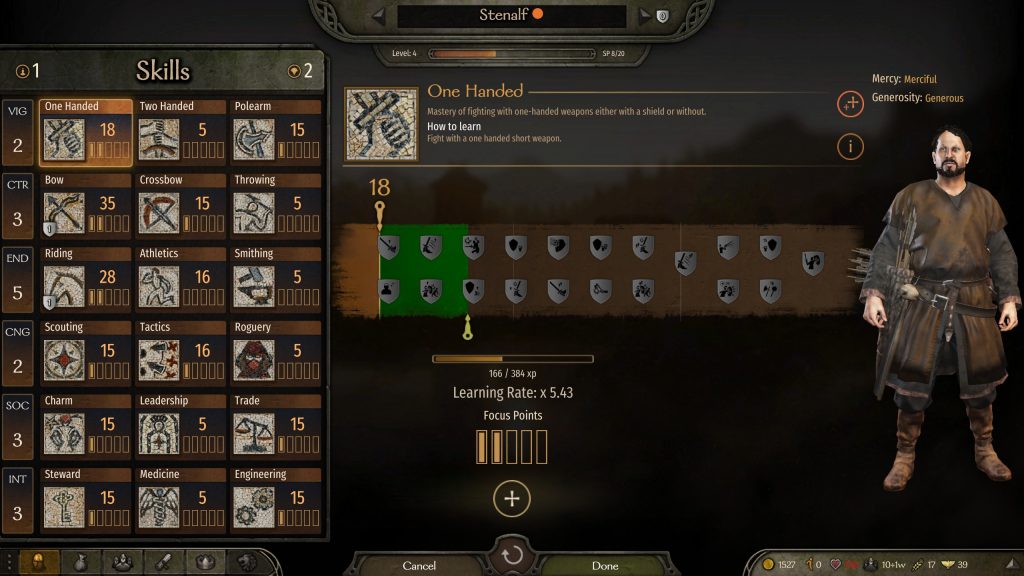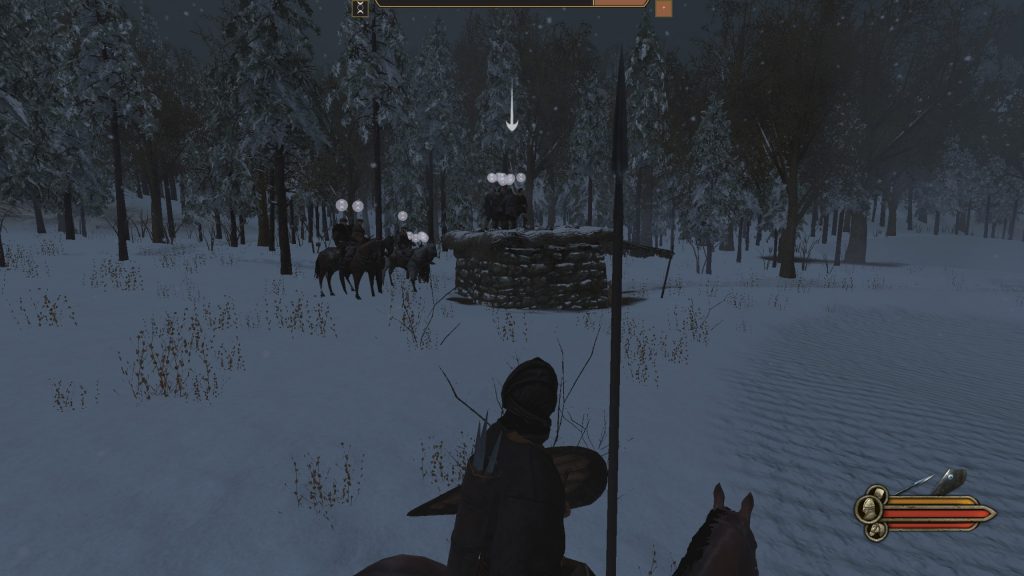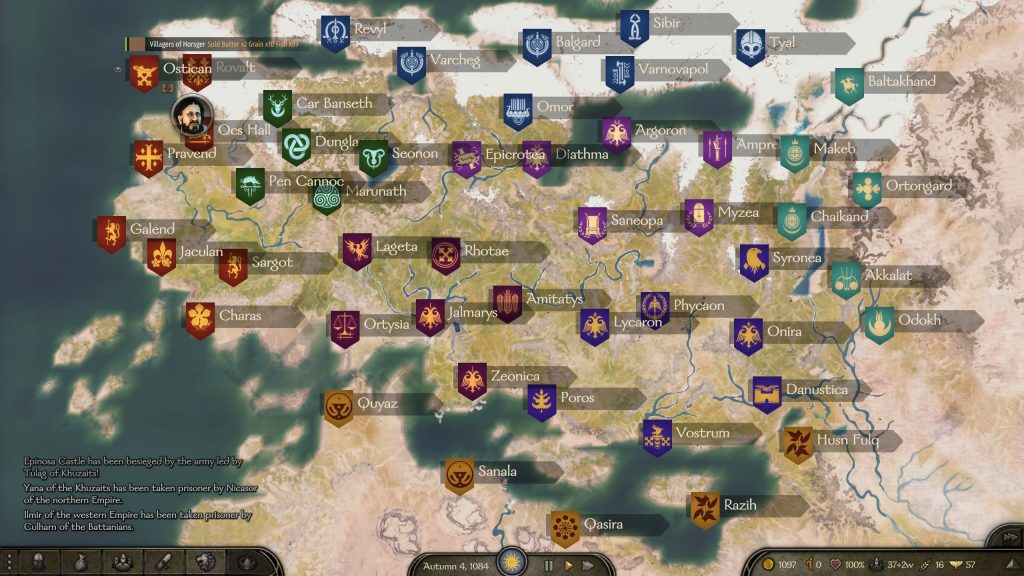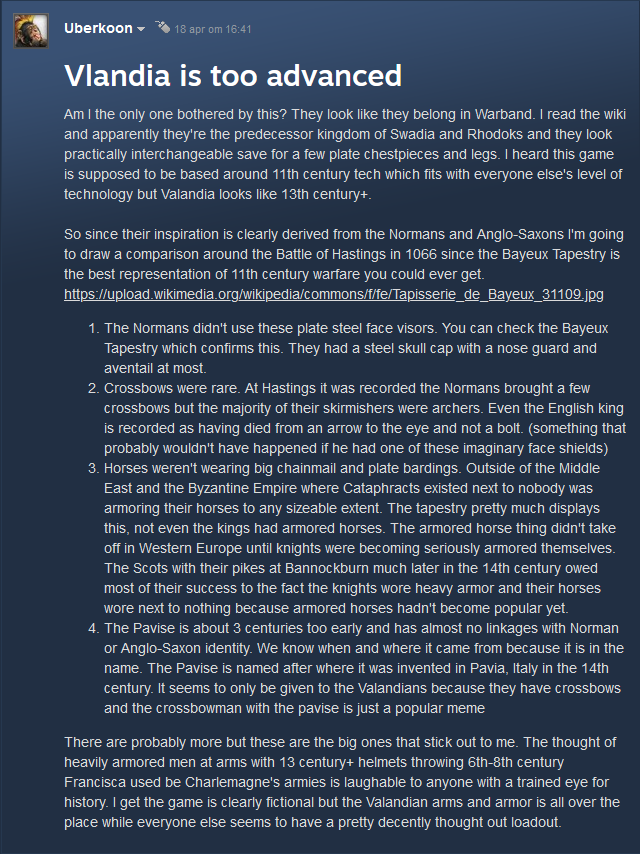You might have already noticed it, but Mount & Blade II: Bannerlord went into Early Access at the end of March, and it has been creating a bit of a storm around the internet. We even had a stab at it during one of our streams! Bannerlord is the fourth installment of the Mount & Blade series developed by Turkish TaleWorlds. The work on Bannerlord started in 2012, so the game has been in development for over eight years! Was it worth the wait, and is it worth your money? Find out in this pre-review (it is not really a review since the game isn’t finished yet)!
What is Mount & Blade all about?
To start off, I’m a big fan of the Mount & Blade series. I picked up copies of earlier installments Mount & Blade: Warband and With Fire & Sword a few years back, and got hooked on the game. Especially Warband, and the Viking Conquest Reforged Edition totally rocked. It is even cooler that Viking Conquest was a mod, which was made into a real DLC by TaleWorlds in cooperation with the developers of the mod. Next to the cool content, the games have a very active online community, and as exemplified by Viking Conquest, the devs also listen to this community. This, along with the many hours I played the earlier installments, made me pretty excited for the new game
For those of you who are unknown with the Mount & Blade series I’ll give a short summary. It is hard to describe Mount & Blade as one type of game. You could say it is an Action-RPG-Simulation-Strategy game: it has elements of all, but cannot be described as just one of those. The game is set in the fictional world of Calradia, which is based upon medieval Europe and the Middle East. Bannerlord is set 210 years before its predecessor, after the fall of a large empire (modeled after the fall of the Roman Empire). In this fictional world, you get to create and level up your own character, fight massive battles (in first person if you want) whilst flailing your sword around like an idiot and conquer towns, castles and villages. You can be a menacing warlord or a peaceful merchant. The choice is yours. The game is built around quests, some large and some small. These are the main way to progress the story, your character and your clan, as well as filling your pockets. But you can also relentlessly chase looters and bandits, fight them and take their loot. You can follow the main story line, or you can just roam around a fictional medievalish world. The freedom to experience a near-Earth history however you like, in short, is the purpose of Mount & Blade.

The games are also known for their rather unique combat system. It uses a click & drag system, meaning you have to click and drag your mouse in the way you want your sword to go. It is hard getting used to, but it does make some sense. Fighting with a sword (or an axe, a pike or a club for that matter) should not really be done by the click of a button. You should work for your victories, and making the combat system more complicated is an effective way of doing so. It might scare off newer players, but it is not that unforgiving of a game. It takes a couple of hours to get used to, but in the end it is worth it.
Early Access
Now getting to the elephant in the room: the game is far from finished. It is in Early Access, meaning that the developers are still developing the game and this is clearly visible. The game comes with numerous bugs, glitches and missing parts. The developers promised voice-overs for many characters; they haven’t been done yet. Many quests are still in development, as well as many towns and villages haven’t been modeled yet. However, it must be said that TaleWorlds does provide the game with regular updates (about twice a week, or some smaller patches daily), and does really communicate with the player base. It has a vibrant forum, where players and developers interact to make the game better. You might hate the concept of Early Access and releasing unfinished games, but you have to give it to TaleWorlds for at least trying to work with the community on finishing the game. Furthermore TaleWorlds really encourage the community to make mods, most of which are really fun to play (have a look at this list of the best mods from PC Gamer).

Also, the graphics and mechanics might not be the prettiest or well worked out, but that was never the case (or the goal) of the game. The game can be rather clunky, especially the combat. However, this is part of the charm of the series. The earlier installments had the same shortcomings, if you even want to call them that. In a time where games seem to be getting prettier and prettier, it is kind of a relief to see a game which is not solely focussed on beautiful graphics. I mean, I like beautiful games, but developers shouldn’t push themselves and their games to the limit just to have good graphics. Upside to the basic graphics is that the load on the GPU isn’t that big. That is a good balance for the heavy loads on your CPU and RAM: the game has some complicated (but still clunky) physics for fighting, which is simulated for every soldier in a battle. You can imagine that the more soldiers in a battle, the heavier the load on your pc. Not having your GPU overwork at the same time as your CPU and RAM are melting down is a plus.
A small cog in the machine
That being said, I would now like to delve deeper into the elements which make Bannerlord such a cool game. At first glance, it is not that fancy, not that well written and it doesn’t have an amazing story. However, it provides the player with a huge medieval sandbox where they can create their own history. And this is at the core of what makes Bannerlord (and the entire Mount & Blade series) so much fun. It places the player in a fictitious but historically functional time and space, and lets you make your own history. There is no grand narrative to the game, no one way to play. Yes, there is an overarching story, but that is actually quite irrelevant to the whole ‘working your way up the medieval ladder’-mechanic at the core of this game. And this mechanic itself is quite fun as well, as you get to experience class mobility in a time where there was no such thing as class mobility (or at least as we now know it). We live in a world where it is possible to move up the social/political/economical ladders, in medieval times this was almost not possible. Bannerlord takes the modern class mobility, and molds it into a fictional medieval world. It is fun, but also makes you realise how societies work, and makes you really proud of your accomplishments if you do end up being the king of Calradia (to quote Dr. Random: ‘The American Medieval Dream’).
Next to this, the game makes the player insignificant compared to the other events in the world. Yes you play the game, but you’re just a small cog in a medieval machine that just keeps on turning regardless if you turn with it or not. The player might be the driving force of the game, but the world goes on without the player: wars will break out, castles and towns will be captured, noblemen and women will be captured and executed. You feel small and vulnerable in a large world, where every other NPC can be your end (especially the tougher bandits roaming around are a tough nut to crack in the early game). In this sense, the game feels a lot like a strategy game developed by Paradox Interactive (who published the earlier iterations of the Mount & Blade series, so it should not really come as a surprise). The world keeps on turning without you having any impact on it.

And this world is not empty. In the world of Calradia, eight factions are vying for power: the Empire (broken up in the Western, Southern and Northern part), the Vlandians, the Battanians, the Sturgians, the Aserai and the Khuzaits. But there are also countless mercenaries, bandits and looters roaming the lands of Calradia. As the player, you can either join one of the factions, pledging allegiance to the ruler, or become an independent faction. All the factions have their own ways of living, own ways of fighting, their own units, and their own culture. It is cool to wander around the world, and see how each faction has different lifestyles, which also reflects in the architecture and fashion of the factions. You are really able to tell apart different cultures, their influences on each other but also the influence the world and its environment has on the cultures. And the factions aren’t just made up, they’re based on real cultures from throughout history.
Most factions loosely resemble European or Middle-Eastern tribes and cultures. Some are more clear, others are a bit of a mix and mash of multiple cultures. The Empire bears resemblance to the Roman and Byzantine empires, especially with the legionnaire and cataphract units. The Vlandians are based on the Norman/West-European feudal culture, with heavy cavalry. The Battanians are a Celtic people, specialised in guerilla warfare. The Aserai are formed after the pre-Islamic Arabic cultures. The Khuzaits are a mix of Mongol and Turkish steppe warriors, focussed on horse archery. Finally, the Sturgians are created after the Rus, but do also have some Northern elements such as axeman, as well as some Slavic influences.
Historical accuracy?
By having cultures loosely formed on real historical examples, the developers have protected themselves from keyboard warriors claiming historical inaccuracy. However, a part of the player base is still going ham on the historical backgrounds of the factions. Especially the Khuzaits are a faction of large discussion: are they Turkish or are they Mongolian? A quick look at the Facebook group of Bannerlord shows that the discussion can become quite toxic (unfortunately). In the Steam Community it is way more civilized, but still people are questioning the historical accuracy of the certain units.

But I do like the semi-historical approach the game takes. I never wonder if it is historically accurate, because the game doesn’t intend or claim to be historically accurate. By taking a more lenient approach to history, the developers have given themselves some more creative liberties; this also makes it easier to balance out units and factions. This is pretty obvious if you take a look at the units, and the time period they are supposed to represent: we’re talking about trebuchets and crossbows in the early Middle Ages. I have some background in medieval warfare (I took a course on violence in the Middle Ages and wrote a thesis about it), but I’m no specialist. However, I do know that trebuchets and crossbows weren’t readily available during those times. They were abundant later on in the Middle Ages however, and the trebuchet is especially cool, so you can see why the developers chose to include these iconic weapons.
Here comes the cavalry
Aside from the somewhat historically inaccurate units, the game does beautifully represent the use of cavalry during warfare. I was really amazed by the sheer power of cavalry, you really don’t get to appreciate it that often. I knew that cavalry was used extensively throughout history, and how deciding they could be. There is a reason why horseback fighters were used from ancient times up until the Second World War. What Bannerlord is especially good in, is showing the power and might of cavalry. Charging at an enemy shieldwall with around 30 horsemen definitely feels very powerful. The sound of the hooves, the speed and the first contact made me really appreciate the damage a well timed cavalry charge can do. With ease, you can break enemy lines, deplete their morale and win battles. It sometimes really reminds me of the cavalry charge in Lord of the Rings, the Ride of the Rohirrim. I knew that cavalry was a useful asset during battles, but I never really realized how impactful they can be. It is just cool!
With my love for cavalry also comes my doubts about the strengths and balancing of cavalry. In all my playthroughs, I always went for a cavalry-heavy army composition, combined with archers and some infantrymen. However, wandering around with 80 men, of which at least 40 are cavalry, seems like a very expensive thing to do. And it should be, but the game actually doesn’t really touch upon that. There is a reason cavalry were often considered elite troops, and only higher nobility were fighting on horseback: horses are very expensive. Not only money wise, but they require quite the bit of food and maintenance. There are no game mechanics in place to provide a cost-based counterweight to the cavalry’s power. You do pay a hefty daily wage for all your troops, but it isn’t like the horseback fighters cost that much more money. However, I can imagine becoming an important part in balancing horse based fighting in future updates, or Calradia is just a world where horses are a lot cheaper. However, this doesn’t really take anything away from the fun!
Verdict
The game is constantly changing. Patches are being made daily, making it possible to play a different game over two weeks. There are a lot of elements which are not implemented yet; for example food doesn’t go off like it did in Warband. I can see them adding that back in. Aside from mechanics like these, a lot of content still needs to be added. A lot of the quests and maps are still not finished. You can approach this by two ways: either you wait until the entire game is finished, or you play it now and adapt to the new bits being added. Waiting until the game is finished might take a (long) while, as TaleWorlds stated they expect the game to be in Early Access for over a year. Playing the game now, and getting the updates on the way makes you miss out on certain elements now (and perhaps later depending on the compatibility of future updates), but at least you have a good reason to start another game when a big update is posted!
In the end, the decision is yours. I really like the game, and think TaleWorlds are taking the right direction with their use of Early Access. They do listen to the community, have regular updates and work with the community and encourage modding, with some nice mods already roaming around the internet. If you’re in for a medievalish RPG with some strategy elements and a clunky but fun combat system, you should pick up Bannerlord. You might be scared off by the €50 price tag for an unfinished game, and that is completely logical. It is completely justified to wait until the finished game is published, and it won’t cost you any more than it will now (as TaleWorlds announced the game wouldn’t change in price if it is finished eventually). And it will probably take a few years before a new installment is published, so there are no worries in missing out on a cool game just now. The community is strong, and will probably be around for many years to come (like it did with Warband). Even if you’re not really into these kinds of games, it might be worth to check it out. You might be surprised when you find yourself swinging swords, managing your warband, and raising your banners for a medieavalish lady or lord!
